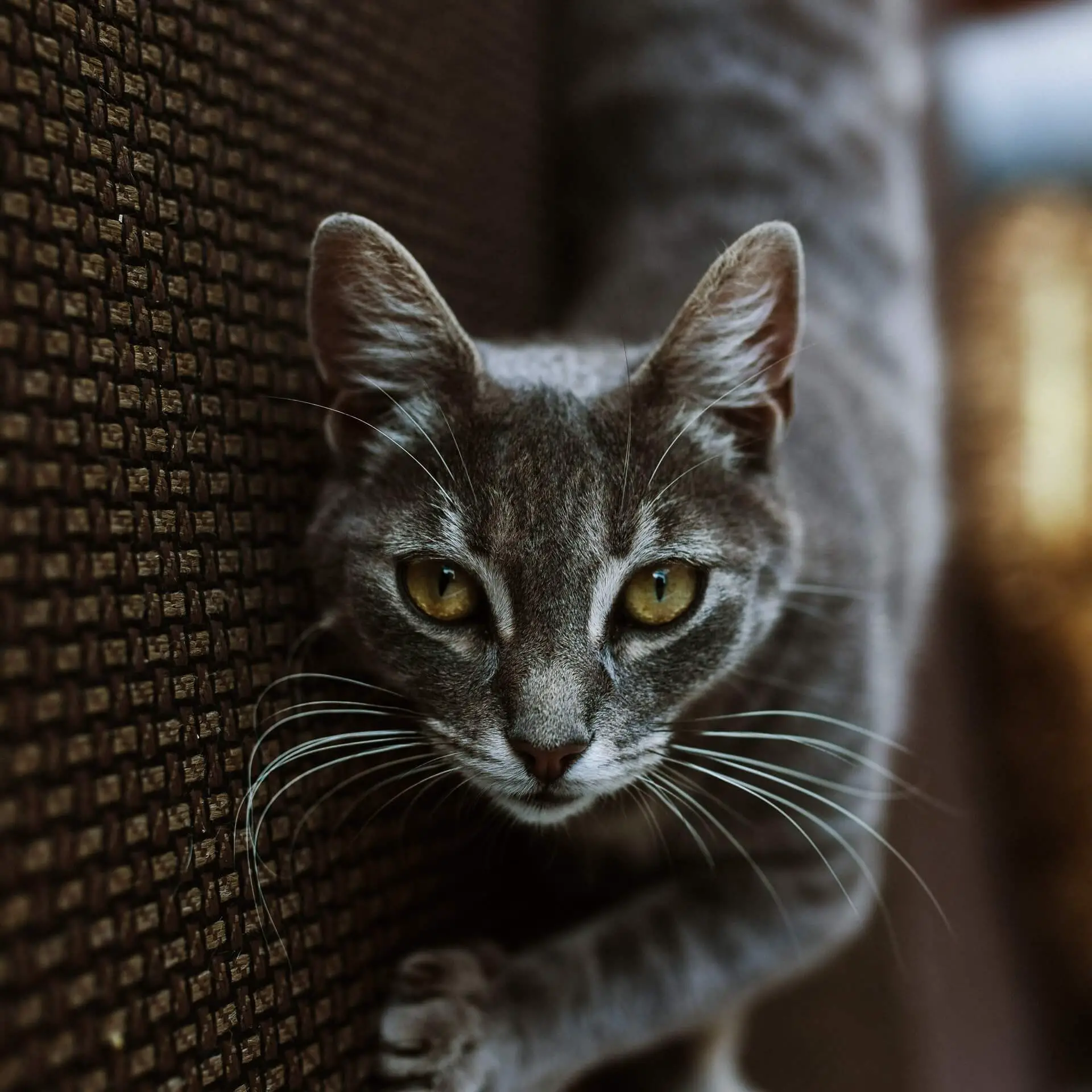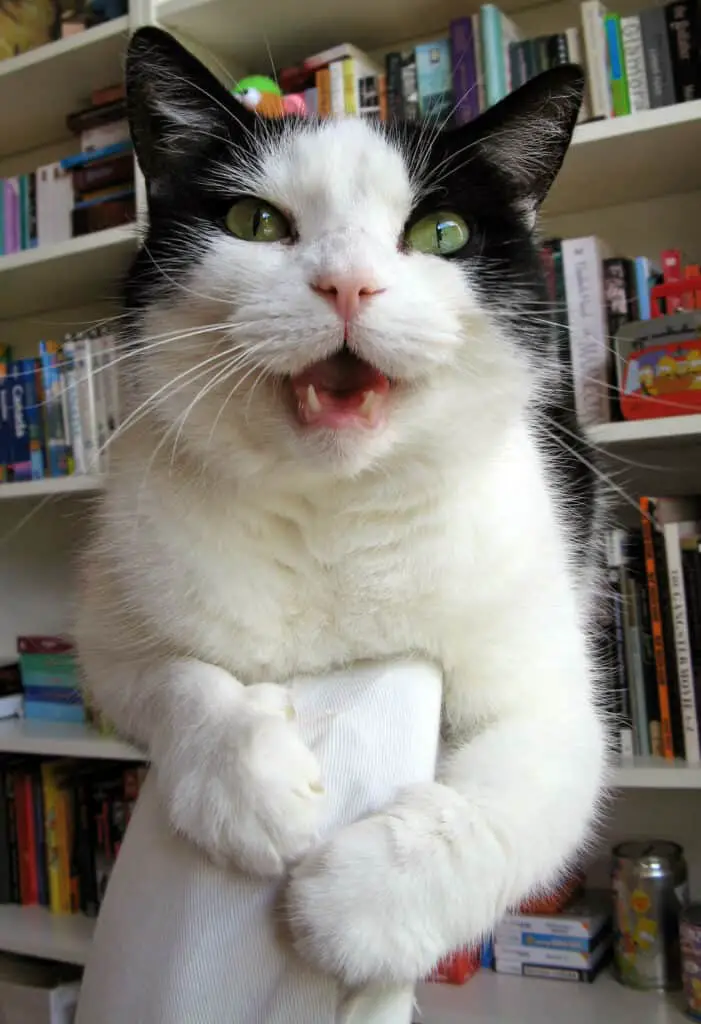What Cats Behavior Really Mean?
Looking to understand your cats behavior?-Here you will find what your overlord is really trying to say!
Feline body language and their vocalizations can be difficult if you aren’t familiar with them.
Cats have over one hundred different sounds they make and each one means something different. Plus, their body signs are significantly different from dogs. This is why learning the difference between a happy cat posture and an irritated tail flicking can be difficult at first, but I’m here to help!
As a veterinary technician of 10 years, I can tell you that their body language is very important in understanding what a cat is thinking or feeling. There are several factors that go into their physical appearance during a specific emotion: the ears, tail and posture change significantly depending on their mood.
This article is here to give you some insight on how to read and understand your cat’s moods and temperament and much more!
- Feline body language (ears, tail, posture)
- Feline vocalization
- What a sick cat looks like
- Cats behavior with other cats
- The aging feline
- Cat behavioral issues
Related Articles:
- Finding The Perfect Feline: Male VS Female Cats – Is One Gender More Affectionate?
- 17 Sleeping Cats Positions Meanings [#3 Means Your Cat LOVES YOU!]
Disclaimers
catsandkittensworld uses affiliate links and we may earn a commission if you purchase through one of our links. This makes the site possible to maintain, thank you. Also, the information on catsandkittensworld.com is purely informational and should not be considered medical advice. If your pet has any medical issues please consult a professional.
Feline Body Language: Ears
Cat ears tell us a lot about their current emotions. Ears can be anywhere from facing forward to being flat out like an airplane. Understanding these subtle changes in ear position will be a huge aid in knowing if a cat wants to be petted at the moment or not. It’s important to always be respectful of the pet’s body language as they have a limited amount of ways to communicate their feelings. Below is a quick reference to what each cat ear position means.
Neutral
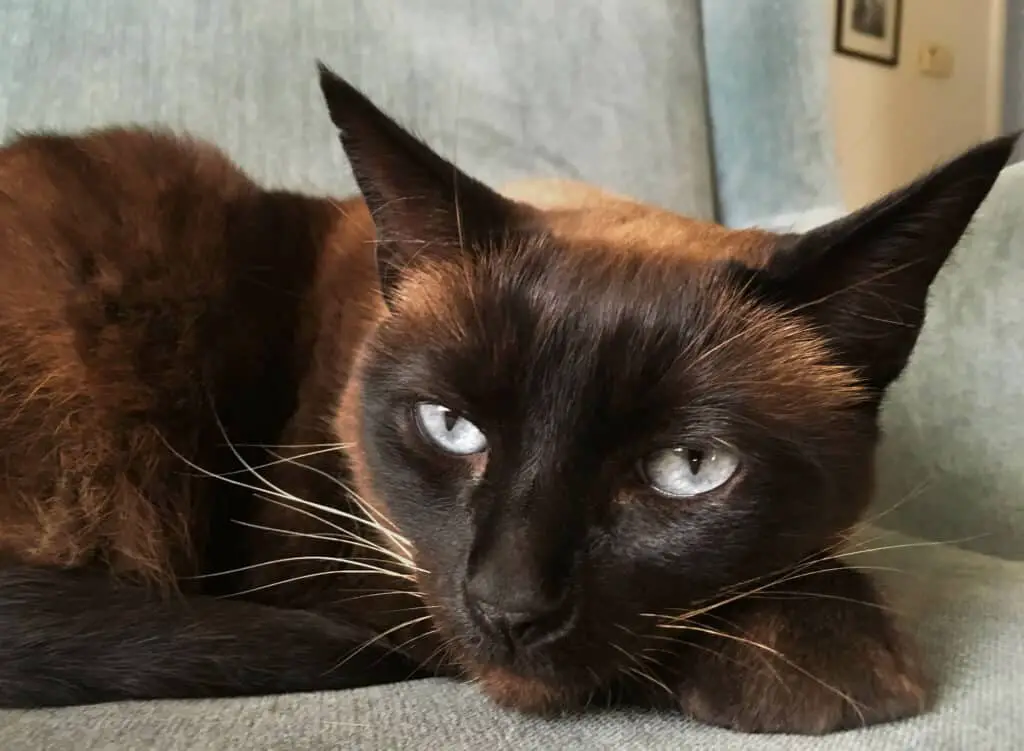
A neutral ear position is one that faces forward in a normal and relaxed pose. This doesn’t actually tell us much about the cat’s mood, except that they are content and happy with their current situation. This would generally indicate that the cat is in a decent mood and could potentially be amenable to some cuddle time or pets.
Straight, Upright and Slightly Forward
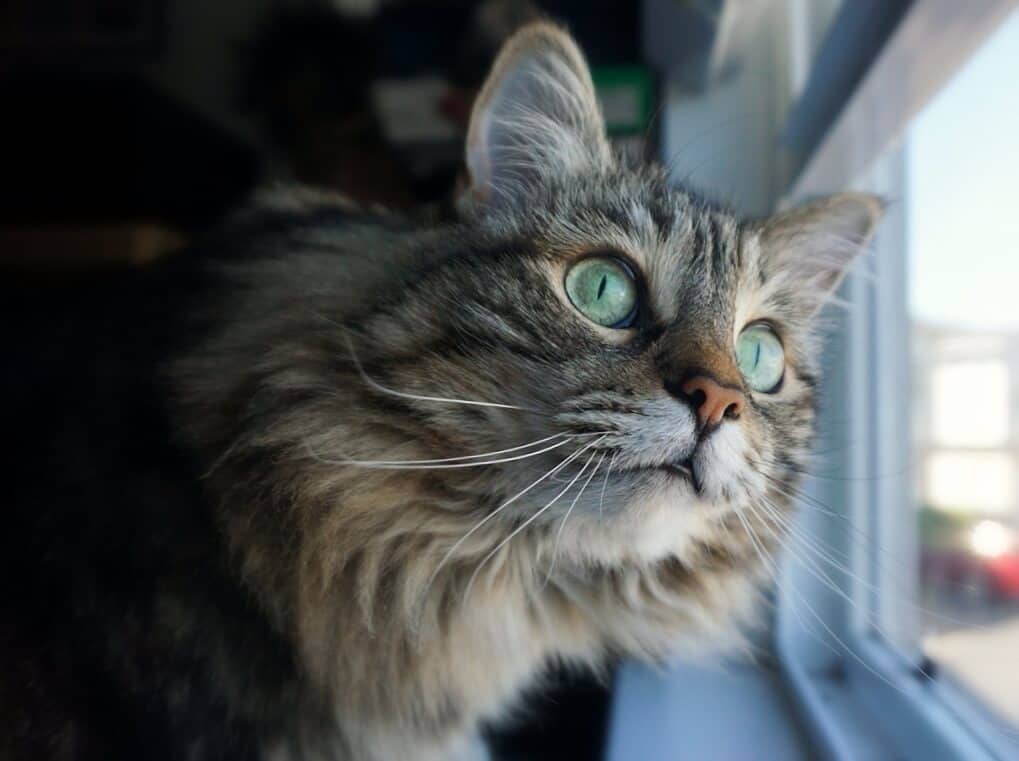
Cats greatly enjoy their natural instinct to hunt and play. When they are intrigued or alerted to something that interests them like a toy or prey, they will often hold their ears slightly forward and upright. This allows them to hear better when they are on the hunt! Now, if your kitty is an indoor feline that doesn’t get to stalk any prey, then they have most likely found a bug or toy that has sparked some curiosity.
If your cat’s ears are in the upright and playful position as described here, then try getting out a laser pointer or some other favorite toy of theirs to engage in some fun!
Flat or Pinned Back (Airplane Ears)
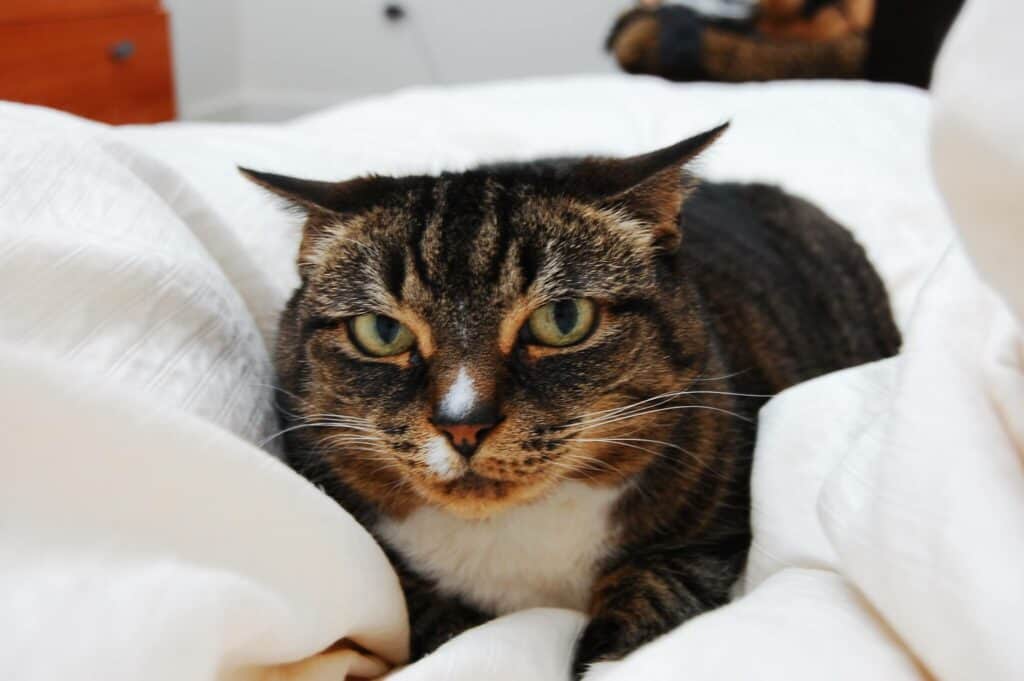
Many veterinary professionals are familiar with the term “airplane ears”, which means that the cat’s ears are flat and straight out to the side so they look like an angry little airplane. This is a behavioral sign that they are either really mad or very frightened and their fight or flight response is about to kick in. Ears that are flat and straight back mean fear and nervousness, which can still lead to biting or scratching.
It would be best to leave this cat alone or prepare for a fight!
Tail Position: Wags Don’t Mean They’re Happy

Not everything is ‘tell tail’ with a cat! A feline’s tail position, like the ears, can tell us a lot about their emotions, but certainly not everything. Remember to interpret other body language signs as well. Cats can be moody creatures that are a little more difficult to read and understand than a dog. After all, canines are much better at wearing their emotions on their doggy sleeves, cats not so much.
Upright
Most of the time, an upright and firm tail while patrolling their house or territory means that a cat is feeling confident and content. This feline is feeling friendly, especially if the tip of the erect tail twitches slightly when interacting with a human or animal.
If the upright tail curves like a question mark, then your cat is feeling frisky, playful or excited. It would be a good opportunity to find a toy and spend a moment playing with them.
Gentle Swishing
A gentle side to side movement with alert and upright ears can indicate that your kitty is onto something. Maybe he has seen something move and wants to play or just in general is feeling curious. As long as the tail movement is paired with a playful ear position and stance, then your cat is probably just excited.
Tip Twitching
Cats will often twitch or flick the tip of their tail if they are curious or feeling playful. Most of the time it is not aggressive behavior but could mean that they will pounce and attack in an excited and happy manner. Busting out a toy for play time could really bring some fun to your kitty’s day.
Tail Wagging and Thumping
When a dog wags, it typically means happiness or joy, but if a cat’s tail is wagging quickly with force then watch out! This kitty is mad and is trying to let you know with his angry tail swishing and thumping. Continuing to pester or upset a cat that has a wagging tail and pinned back ears will end up with you getting scratched or bitten.
Low or Tucked Tail
A tail that is low and straight down can indicate a stressed out or angry feline. It would be best to watch out in case the cat feels threatened and decides to take it out on you. Sometimes it may not pinpoint aggression, but it does mean a generally serious mood.
If the tail is tucked under them or very close to their body with a hunched and lowered body position it means that the feline is very stressed, anxious and feeling submissive. Most of the time they will not lash out in an aggressive manner, but will cower in a frightened state.
Puffed Up
Most people are familiar with the funny arched back and puffed up tail of the spooky cat on Halloween decorations. This is mostly a defense mechanism as the cat attempts to make itself look bigger. Generally this tail position means that the feline is very agitated, frightened and is using intimidation to protect itself from potential danger.
Cat Body Language: Using the Whole Body to Make a Point
Cats do not have the same ability as dogs or humans to show emotions through their facial expressions, so they use their entire body to try and display their thoughts and feelings. The pose that a cat uses while sitting or laying down can indicate a lot of different moods. What does showing their belly mean? What does loafing tell us about a cat’s feelings? This section will explain the different body positions and what our cats are trying to tell us.
Sitting Upright
While sitting upright seems like such a normal position, that’s because it is! Typically if a cat is sitting pretty with their tail around the feet and their eyes observant, they are just feeling alert and attentive. Probably curious too and just wanting to keep watch of things in the environment.
Loafing
A favorite position among cat fans on the internet, this pose gets its name from the shape that cats take. Well, they look like they could just fit right inside a bread pan, therefore, a loaf. Typically they also have all of their paws tucked underneath them. This a position that a content cat would take, usually they close their eyes and rest for a bit as well. Most of the time they won’t stay that way for too long, but just long enough for you to snap some pics.
Showing the Belly
It only takes one time of petting an exposed kitty belly and getting scratched for it before you realize that it’s almost always a trap for some reason. Not saying that every cat that rolls onto its back for belly rubs is going to grab the hand that pets them, but it happens a lot. Sometimes the feline really does just feel comfortable enough with you that they want some tummy rubs. Consider yourself lucky if they don’t deliver a scratch or two afterward.
Arched Back
An arched back paired with bristling and bushy hair can mean that a cat is frightened or extremely agitated with something. This position is normally seen when a feline comes into contact with another animal or frightening situation.
In other cases, an arched back that is not seen at the same time as fear is much less serious. Sometimes a cat will arch their back and rub against you to ask for pets or attention. Most likely they just want food too. That brings me to the next one.
Rubbing Against You
Most people, even those that don’t spend much time around cats, will tell you that when a feline rubs against you they are happy and want attention. This affectionate behavior is obviously super cute and makes most people feel special.
The next reason that they like to rub against people and objects is because they are trying to mark their territory. Which is much nicer than peeing on your pant leg. Cats actually have special scent glands in their cheeks, which is why they rub their face on things the most.
Kneading or Making Biscuits
Many owners and cat lovers have called the act of kneading bedding, people or other animals as ‘making bread’ or ‘making biscuits’. It is a cute behavior that many humans really enjoy watching and or being the subject of said kitty massage. Cats will really only perform this action if they are content and happy with their surroundings. Remember, cats don’t just make biscuits on anyone!
Butt Wiggles
Another internet favorite is cats wiggling their bums while they prepare to pounce on their prey. Whether it be a toy or another animal, this adorable action is loved by many people.
Licking
When a cat chooses to lick a human or other animal, they are saying that they choose to recognize that individual as part of their ‘group’ or family. They will groom each other as a sign of affection, cleanliness and respect. Some behaviorists speculate that it may even mean that the cat is ‘petting’ you the way that you do them.
Sleeping Positions And What They Mean
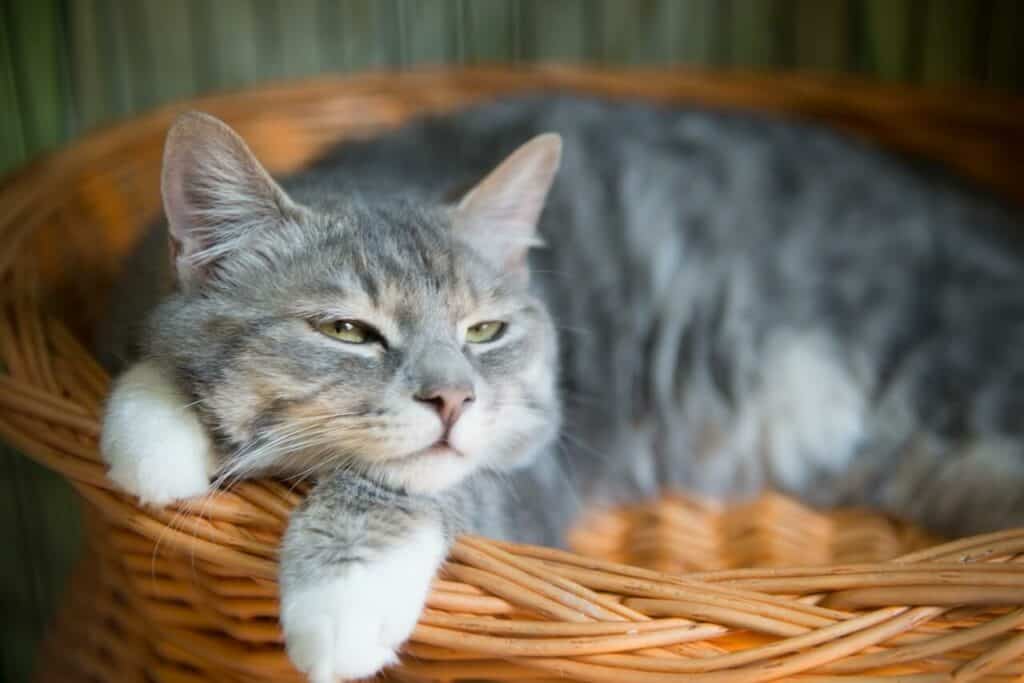
Sleeping in the wild or in an unsafe environment can be risky for all animals, as they are vulnerable and the most at risk for attack or injury. Most of the time the pose of an indoor cat can still be reminiscent of a position that a stray or outdoor cat would sleep in, as instinct never really goes away.
Curled Up Tight
A cat sleeping curled up in a tight ball is one that is trying to stay warm and cozy. In the outdoors, most cats sleep this way in order to conserve heat in the colder weather as well as protect vital areas like their head and belly.
Napping Inside Something
Cats love to find things to go inside of and hide or play in. That is no different when it comes to sleeping. Many cats will really enjoy finding a small box or other space to snuggle into for safety and warmth. In the wild, most cats will seek out small and hidden spaces to protect them in order for survival.
Belly Up and Side Sleeping
A cat that is willing to sleep belly up or on their side is one that has no care in the world. He knows that he is safe in his comfy and protected home and can pass out in any position he wants. These felines are extremely relaxed and comfortable in their space and are willing to fight off the normal instincts to sleep curled up or hidden away.
The Whatever Position
I call this the ‘whatever’ position because these cats just sleep whatever way feels most comfortable. Legs all over the place and belly exposed. They just sprawled out however they wanted and had no care in the world. Now that is the way to live!
Cat Speech And Understanding Their Vocalizations
The feline species can communicate with around 100 different sounds and vocalizations. Did you know that cats actually don’t use meowing or other noises as a form of communication with other cats?
Scientists believe that cats actually started meowing in order to get our attention and talk with us. When they are tiny kittens they will make mewling noises at their mother but after they are grown they no longer do that.
The below information will go over cat vocalizations and what your feline friend is trying to tell you through trills and meows.
Meowing
Cats started using meowing with people because they figured out that they can’t understand or communicate with us exclusively through smell and body language. Meows can mean many different things such as a change in pitch could be excitement or frustration, where the length of a meow could mean more of a demand. Trilling is a cute little ‘brrrrr’ noise that they make when excited, happy or curious.
- Short meow: greeting like a quick “Hello!” Especially if you just came home or they haven’t seen you in a while.
- Multiple quick meows or mews: usually this is an excited response. Almost like they are saying “Hey there! I’m so happy to see you!”
Generally any meow that clearly sounds pleasant or excited indicates exactly that. Cats have been pretty good at developing their language with people and recognize how we respond to their different sounds.
Irritated meows or noises that are used for demands and requests sound quite different from the happy and pleasant mews and chirps in the above category.
- Middle pitch, short ‘mrows’: Many cat owners say that this noise is one that is reserved for requesting food or treats. Sometimes harassing their owners with this sound means they want some extra attention or special snacks.
- Long drawn out mrow: Cats will use this long and drawn out vocalization to demand things from their humans. Sometimes it just means that they want to be let outside and other times it means they want to be fed or played with.
- Low pitch and long meow: This is a sound that cats make when they really want something. Usually food or whatever your cat is most motivated by. You could even call this sound a complaint of sorts! Like you’re clearly doing a terrible job as their human servant!
- High pitched shout: OOPS. Kitty probably had its paw or tail stepped on and they shouted in pain and shock. Sometimes cats will use this scream in desperation, as a way to scare off any predators or humans that have frightened them too much.
Sick and Aging Cats
Cats are professionals at not showing weakness or injury and will do everything they can to act normal even in a time of illness and distress. There are several ways to tell if your feline friend is feeling under the weather or affected by age. Below I will give you a quick reference to cat body language and signs of illness and old age.
All cats are different and the symptoms that are seen may vary from one individual cat to the other. Minus obvious signs of illness like vomiting or diarrhea, many cats will become withdrawn and hide when they normally would be social or sleeping on the couch. There are many physical symptoms that can be seen when a cat isn’t feeling well.
- Withdrawn/hiding: Some cats will hide or become less social. Other cats may become clingy and want more attention than usual.
- Lethargic: Lethargic can mean that they are less energetic and sleeping more than normal.
- Abnormal posture: Crouching or sitting in an awkward position can indicate pain in the back or abdomen.
- Changes in eyes: Some cats will have raised third eyelids or will squint and keep their eyes shut if they are not feeling well.
- Changes in grooming habits: When a cat is sick they will often neglect their normal grooming habits, some will over groom an area that is painful or itchy.
- Change in appetite or thirst: Not wanting to eat or drink is a major sign of illness in cats. In rare cases, overeating might be a symptom of a thyroid condition or other issue. Weight loss or weight gain can also indicate that something is amiss with your kitty.
- Vocalization: When a cat that was once chatty becomes quiet or a quiet cat is suddenly shouting all the time, there may be something going on. Or not. It just depends on other signs and changes in the environment.
- Not getting around as well: This is more for the aging cat. Many felines will become less active as they become more arthritic and painful. Adding a joint supplement to your senior cat’s daily regimen could help with general aging pains. (feline cosequin)
It is extremely important to call your veterinarian and make an appointment if any of these signs or symptoms are seen in your cat. While it is possible that there is actually nothing wrong, it is also possible that you have caught an issue early. Being aware of and treating illness and injury in your cat as soon as possible is crucial for their quality of life and happiness.
Do Cats Like Other Cats?
Just depends on the cats. Some felines get along great with each other while some cats seem to hate each other’s guts. The best way to look at it is from the standpoint of roommates. Some people get along well and others not so much.
If you have a cat that doesn’t get along with others then it may be best that they live in a home where they would be the only feline. This is very common. Don’t feel bad if rehoming a pet is necessary for the happiness of that animal.
3 Most Common Cat Behavioral Issues
Behavioral issues in cats can be difficult to deal with. Especially certain ones.
- Inappropriate peeing/pooping: The #1 reason why cats are surrendered to shelters or rescues. Sometimes it is a UTI, they are angry or upset about something and other times it’s due to Feline Lower Urinary Tract Disease (FLUTD).
- Scratching and destructiveness: Scratching is a common cat behavior that they use for marking their territory. If a cat doesn’t have appropriate areas available to scratch they will take it out on your furniture. Destructiveness is typically out of boredom or play. Again, be sure to have appropriate resources for them to scratch and tear up.
- Aggression between cats: Cats don’t always get along. We can’t expect them to when people bicker and argue with those they live with all the time. When aggression among housemates becomes too much though, it may be necessary to find one of them a new home where they can either be alone or with a different feline friend.
At the End of the Day
Cats are truly fascinating and entertaining creatures that bring a lot of fun and curiosity to the table as pets. They can be great companions for people of all ages and some of the best feline friends can turn even a dog lover to the cat side (insert evil laugh)! Knowing and understanding our feline overlords and all of their quirks will be a big help in raising a happy and satisfied kitty.
Freelance Writers’s Bio:
This article was written by freelance writer Allison Salonko .
My name is Allison and I have been a veterinary technician for 10 years. Writing and art are my passion. When I’m not working in the pet clinic I enjoy spending my time writing, painting or watching movies with my three cats, two kids and husband.
